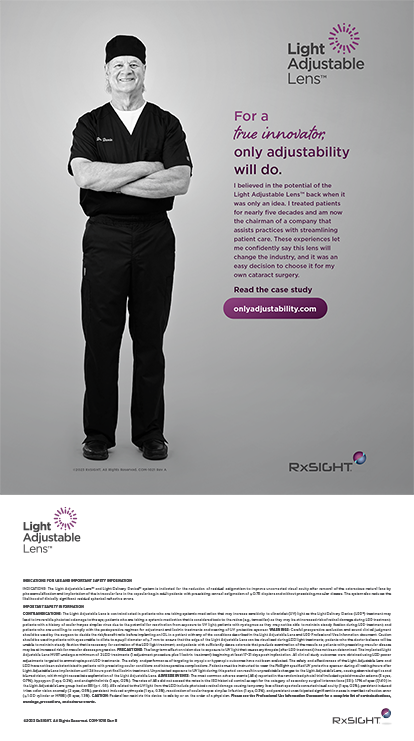
Do you feel comfortable with refraction, including assessing best-corrected image quality?
Can you measure ocular dominance?
Are you comfortable performing a refraction with both of the patient’s eyes open in order to assess which one he or she finds more comfortable for reading and which eye for distance? Presbyopic patients do not always want their dominant eye set for distance and their nondominant eye for near; sometimes, it is the opposite that brings them the most joy and comfort.
Can you measure the physical and optical health of the tear film and understand its importance in accurate diagnostics, wound healing, and vision?
Are you comfortable reading the topography of the posterior or anterior cornea, and do you understand the maximum reasonable steepness for a hyperopic laser ablation and the maximum flatness appropriate for a myopic laser ablation?
Can you read a wavefront map, apply it to the patient’s slit-lamp examination and age, and understand if the best treatment to recommend is nothing, conventional, wavefront guided, or wavefront optimized?
Do you understand optical scatter and irregularities and how to localize them to the tear film, cornea, or lens with the history, examination, and modern-day diagnostic instruments such as the HD Analyzer (Visiometrics), iTrace (Tracey Technologies), and Pentacam (Oculus Surgical)? Can you comfortably use this information to counsel a 56-year-old man whose Snellen visual acuity is correctable to 20/20 that he should not have laser vision correction because of the nighttime glare (that he is not telling you about) from increased lenticular aberrations caused by early nuclear sclerosis that is not perceptible at the slit lamp? Will you be able to explain that his best option is a refractive lens exchange, be it in 1 month or in 10 years, and that doing nothing is absolutely OK and better than laser vision correction at this point?
What would you say to a 30-year-old wanting laser vision correction who has a BCVA of 20/25, a normal slit-lamp examination, a healthy retina and optic nerve, and normal topography? Do you recognize that an overrefraction with a rigid gas permeable contact lens would be of value and that, if it corrects his visual acuity to a crisp 20/20, then dry eye disease, anterior basement membrane dystrophy, or some other anterior corneal pathology is a concern and corneal laser ablation is likely contraindicated at this point? Do you see a path to making the patient happy?
What would you do diagnostically and potentially in terms of further treatment for a patient who undergoes LASIK for -6.00 D of myopia and presents 6 months later unhappy with the plano manifest refraction and 20/20 UCVA?
Can you measure the corneal aberration profile of a patient desiring a multifocal IOL and use that information and angles alpha and kappa to make a recommendation and manage his or her expectations?
Can you help a 62-year-old with 20/20 BCVA who underwent LASIK 15 years ago and feels she cannot drive at night understand that lens surgery is probably her best option? Do you know the tests to conduct to prove this to yourself and to her?
What would you do for a demanding engineer who seems perfect for laser vision correction in all tests and discussions? How would you set reasonable expectations? If the patient were unhappy with a plano result after LASIK, what diagnostics would you perform, and how would you satisfy the patient?
What are the implications of operating on a cornea that is 480-µm thick in an 18- versus a 65-year-old?
Have subtle topographical changes ever made you suspect patients are frequently rubbing their eyes? Would you ask them to demonstrate that behavior so as to judge if it is potentially harmful? Would you refuse to perform refractive surgery until such a patient demonstrated an ability to stop rubbing his or her eyes?
financial interest: none acknowledged


